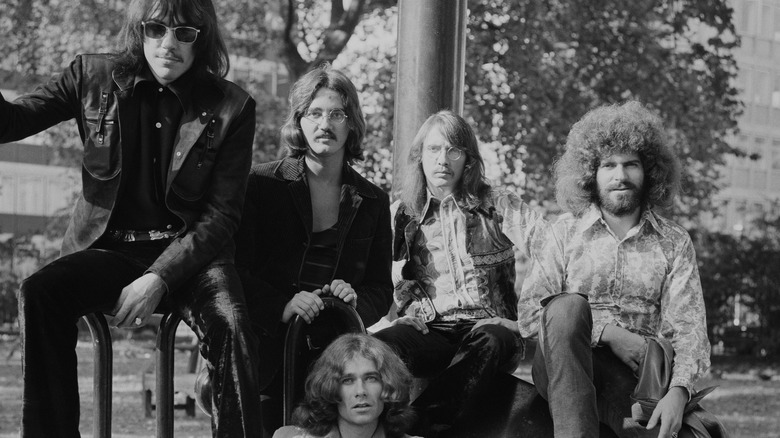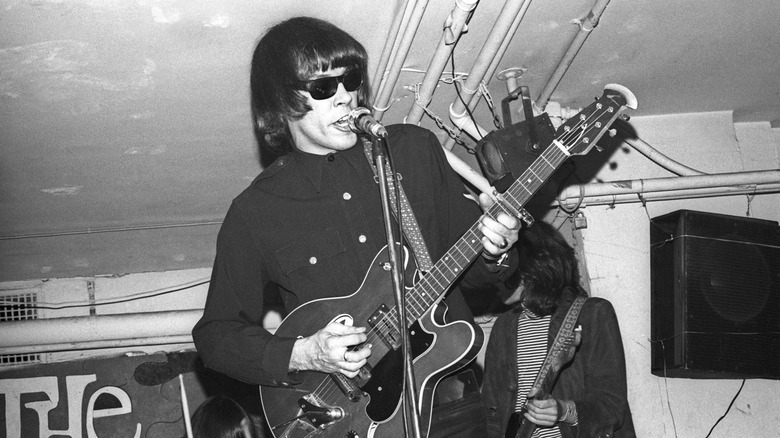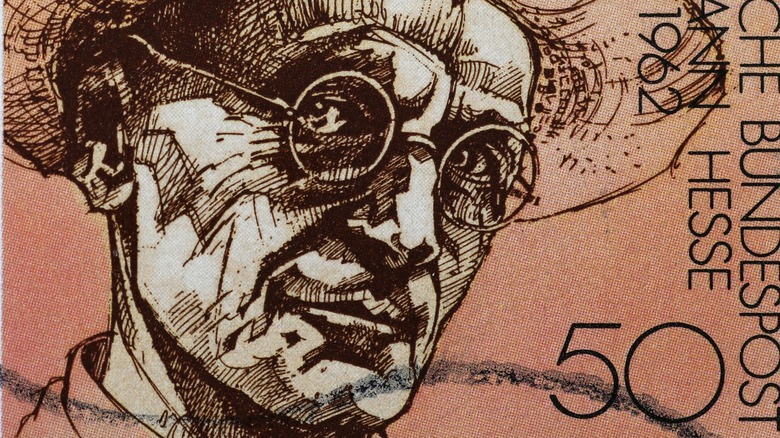How Did Steppenwolf Get Their Name?
For just a few years, Steppenwolf was a breakout band in the hard rock scene of the late 1960s and early '70s. Founded in 1967, the band released their debut album early the following year, which included the No. 2 Billboard hit "Born to Be Wild" and their cover of Hoyt Axton's "The Pusher," both of which featured in the 1969 road film "Easy Rider." Besides Steppenwolf's roaring and rumbling instrumentals, well-suited to Dennis Hopper's motorcycle epic, the raspy wail of lead singer John Kay gave them a distinctive and aggressive sound for a politically and culturally turbulent era (via AllMusic).
Many bands scrape to find good names; plenty of Steppenwolf's contemporaries and predecessors had opted for simple group monikers like The Animals and The Beach Boys (and, of course, The Beatles). But in choosing the name Steppenwolf, the band may have unknowingly joined a rising tide of hard rock outfits with more abstract and evocative titles, like Cream, Led Zeppelin, and Black Sabbath, thus paving the way for bands such as Rush, Metallica, and even Nirvana.
John Kay and the Sparrows
According to the official Steppenwolf website, the band was named for a Hermann Hesse novel of the same title. But Steppenwolf wasn't their original name, as the group was born from the ashes of another Canadian band.
The only remaining member of Steppenwolf today is John Kay, a West German-born rock music fanatic who had immigrated to Toronto as a teenager in 1958. There, he was able to engage much more deeply with the emerging music genres in North America. In 1965, Kay joined up with the Sparrows, a successful band that AllMusic calls "a kind of missing link in the history of Canadian rock," as they ultimately spiraled into irrelevance. The Sparrows were once known as Jack London & the Sparrows in 1964, until London's departure the next year. More lineup changes, including the addition of Kay, spurred them to rename themselves again to just The Sparrows.
As the Steppenwolf site tells it, Kay journeyed down to Los Angeles where producer Gabriel Mekler encouraged the singer to give music another shot. Kay gathered former Sparrows Jerry Edmonton, Goldy McJohn, and Michael Monarch to join him, and Steppenwolf was born.
What is the novel 'Steppenwolf' about?
The novel that Steppenwolf is named for — by German-Swiss author Hermann Hesse — is about a middle-aged man suffering an existential crisis. He wanders around a city in search for some kind of understanding of his life, both spiritually and physically. A 2013 review and retrospective on the book by The Guardian describes protagonist Harry Hailer as "a public intellectual [who has] has retreated in disgust from modern European culture." Hailer is jobless, homeless and without a family, and so lives alone like a wolf concerned with only his most primal needs. Suicide is a major theme, as Hailer — and Hesse himself — struggles with the exhausting labor of everyday living against his deep desire to experience a substantial, pleasurable life. Ultimately, the book is about the protagonist's recovery from despair, a theme the author lamented that his audience missed.
According to DW, the band's producer had just read the novel and liked the name. None of the band had read it yet, but neither did any of them have a better suggestion. The name stuck. (Per Collins Dictionary, the word translates as prairie wolf, or coyote.)
Though the book was published in 1927, it became what The Guardian calls a "countercultural classic" of the 1960s. It makes sense, then, that a rock band in California in 1967 would find something appealing about the then four-decade-old text.


